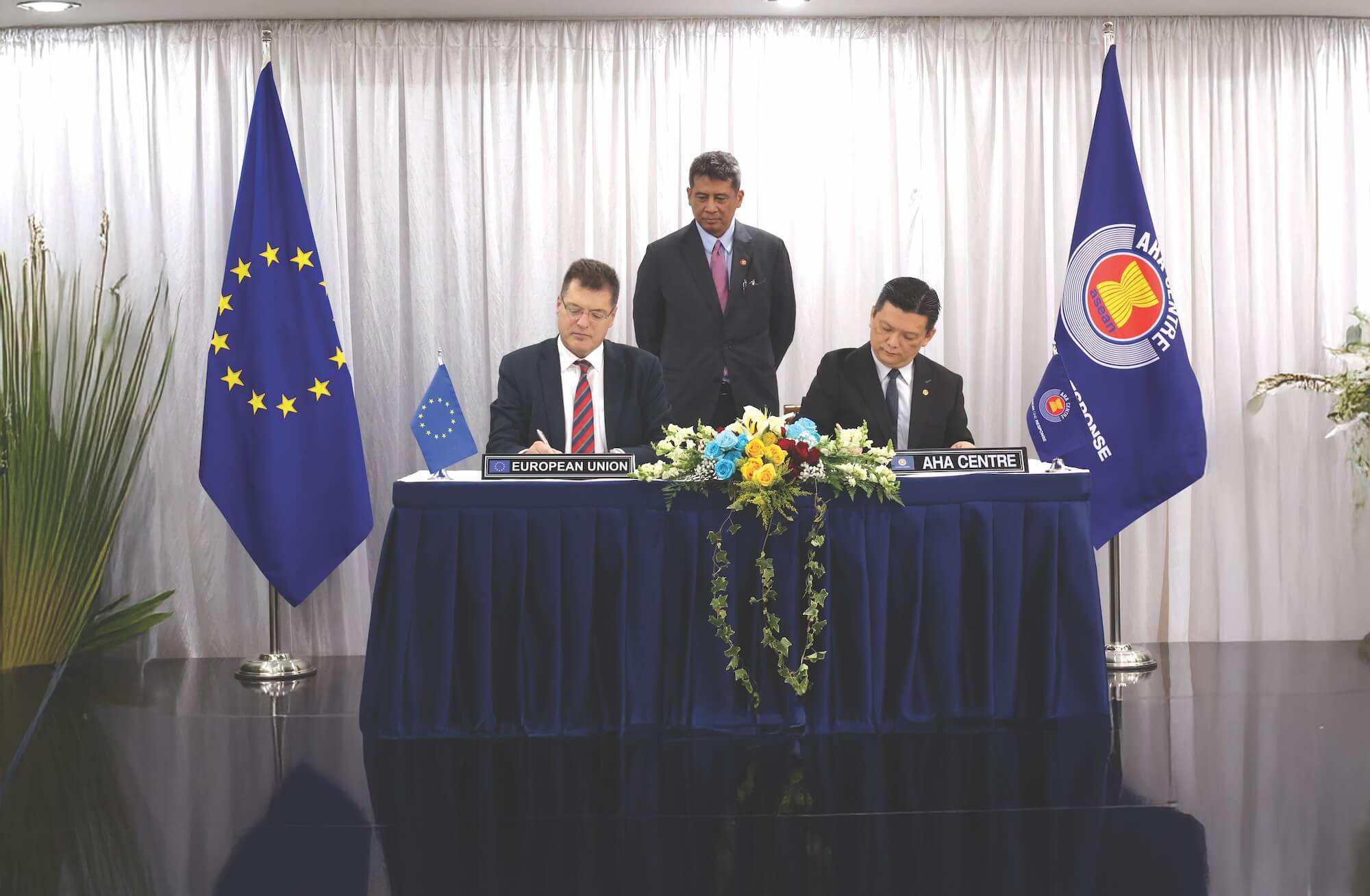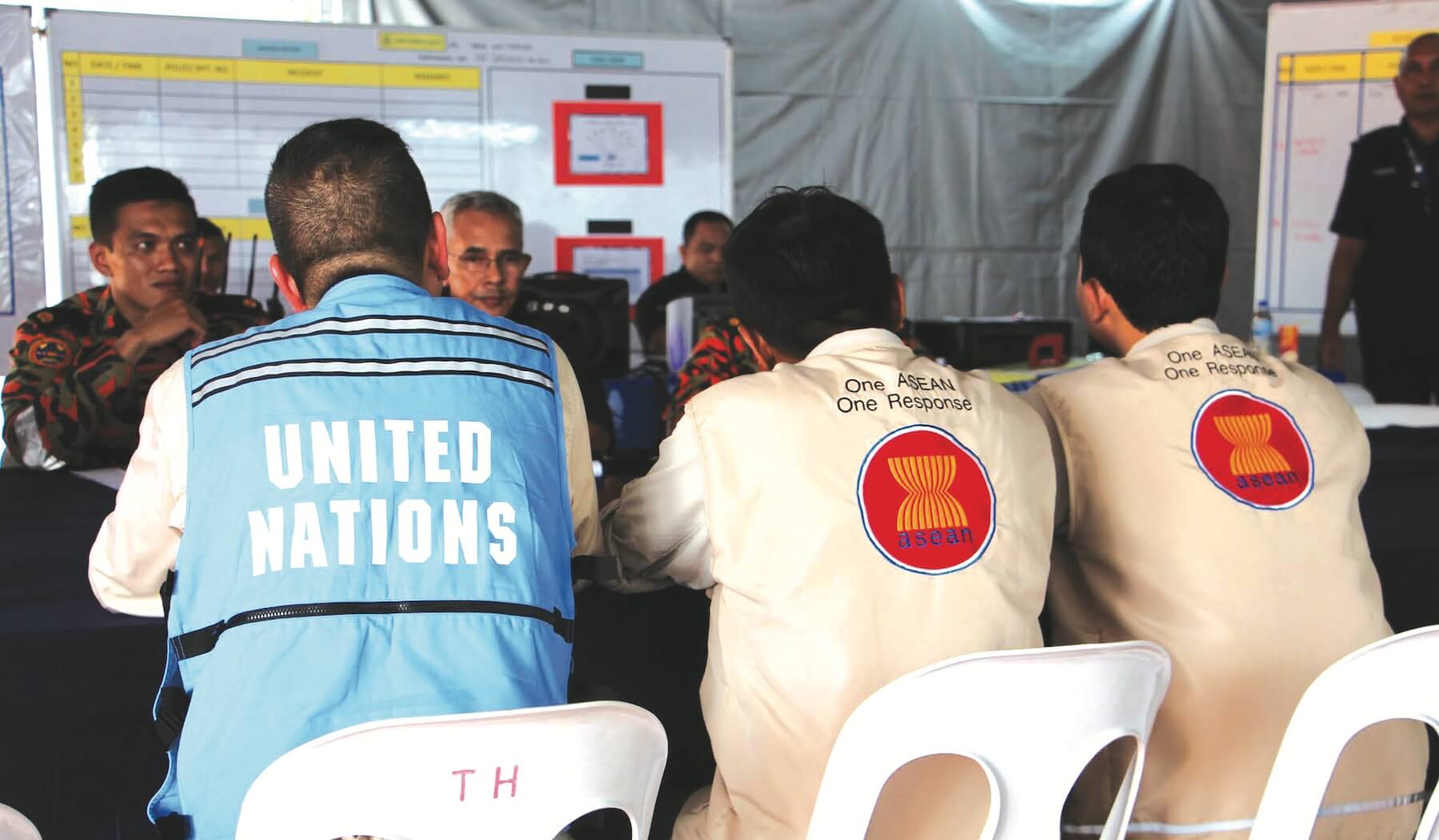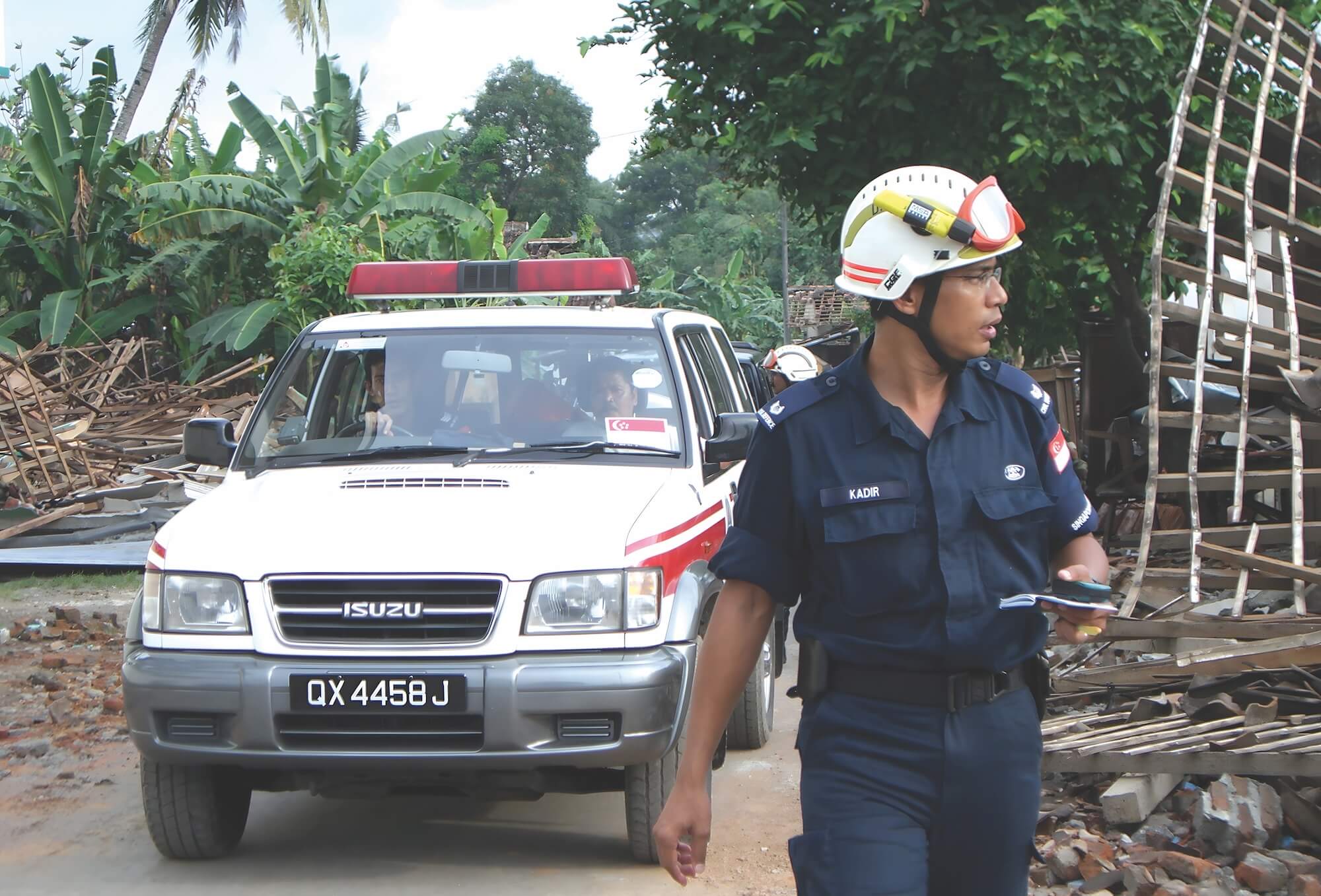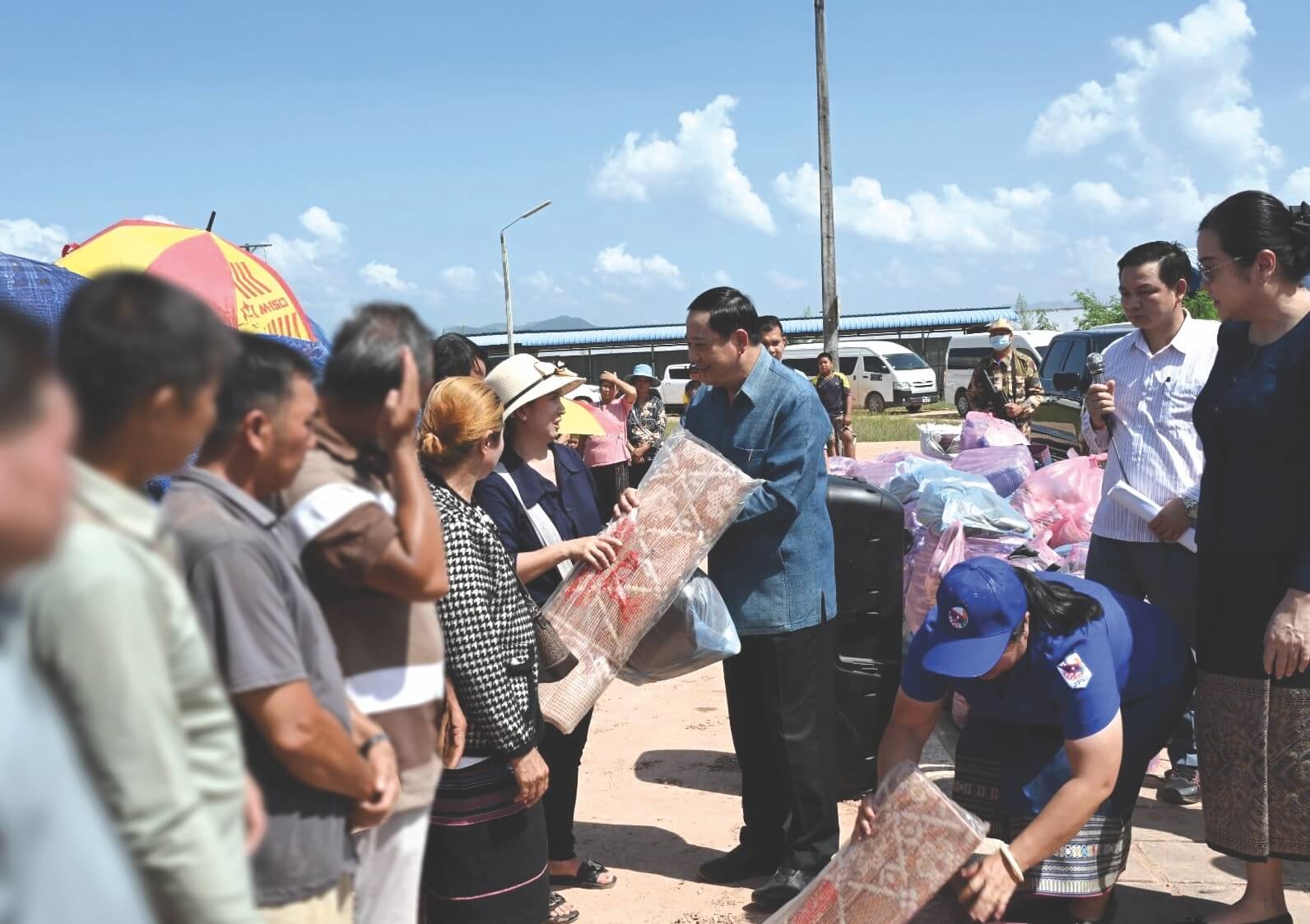
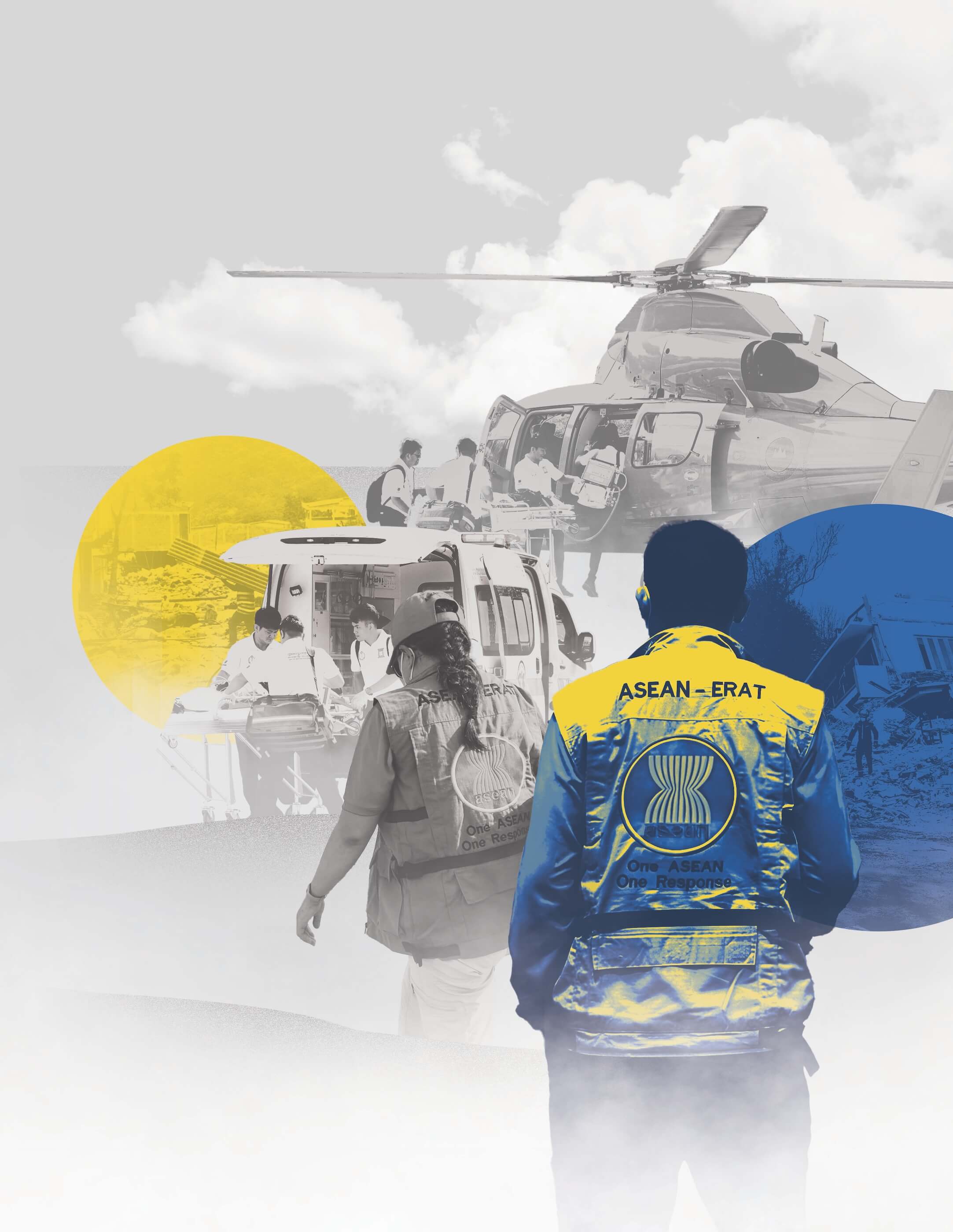


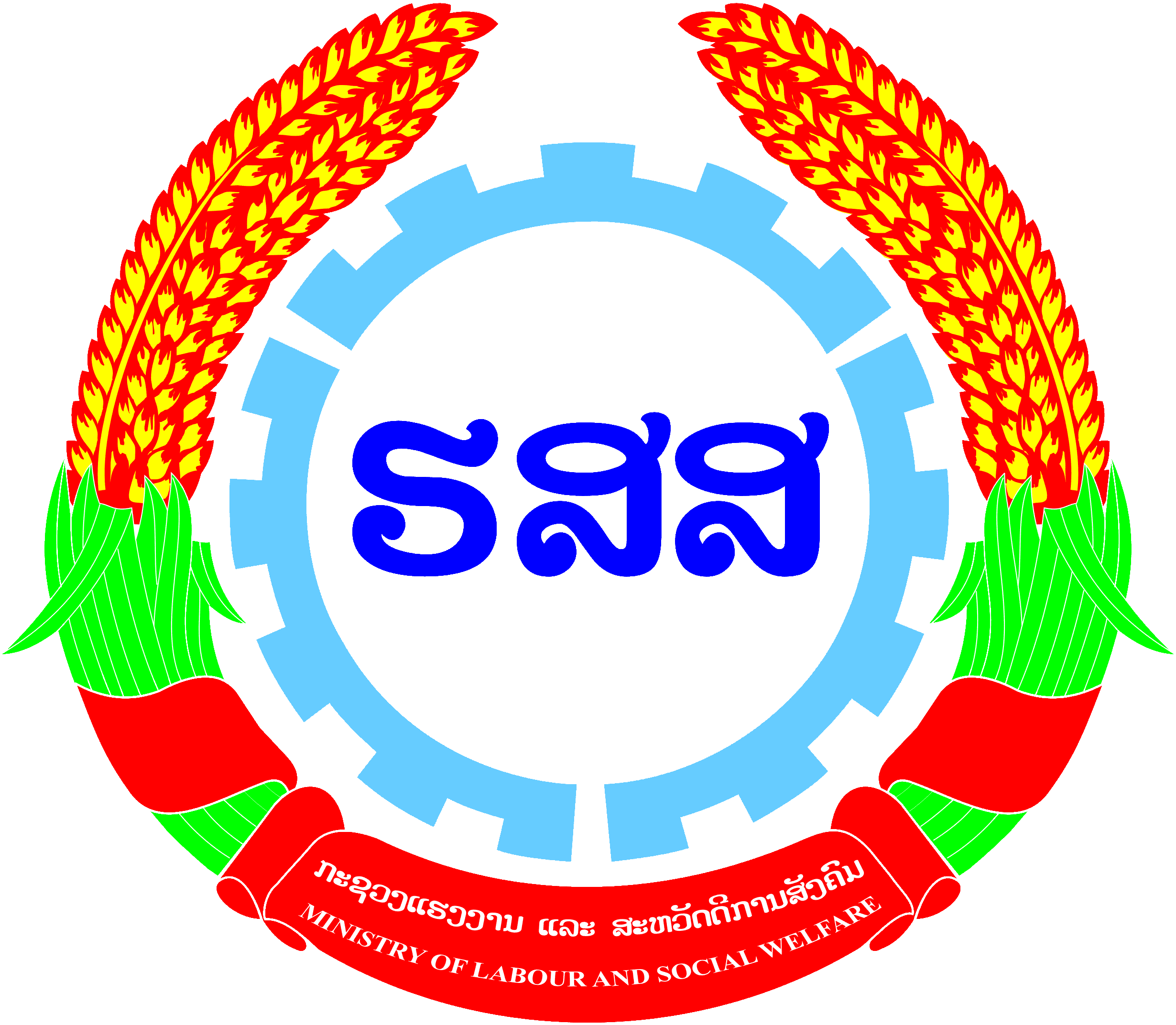
In September 2024, two powerful storms, namely Tropical Cyclone Yagi and Tropical Storm Soulik, tore through northern Laos, leaving behind widespread destruction. Homes were destroyed, roads were washed out, and communities were left struggling to recover. It was one of the most devastating natural disasters the country has faced in recent years, highlighting Laos’s vulnerability to extreme weather events intensified by climate change.
The storms brought heavy rains that triggered severe flooding, flash floods, and landslides across northern and central Laos. Entire villages were submerged, roads were cut off, and critical infrastructure such as schools and health centres were damaged and destroyed. The Mekong River and its tributaries overflowed, making the situation even worse.
The disaster hit 10 provinces, including Luangnamtha, Houaphan, and Vientiane Capital, affecting 31 districts and over 500 villages. More than 128,000 people were affected, nine people lost their lives. Thousands of families lost their homes, crops were ruined just before harvest, and many communities were left with difficult access to clean water, food, or electricity.
The government’s rapid mobilisation
As the floodwaters rose, the rescue teams led by the Lao People’s Army were quickly deployed to carry out evacuations and search and rescue operations. At the same time, the Lao government responded swiftly. Just one day after damage reports came in, the Central Disaster Management Committee (CDMC) held an emergency meeting led by the Deputy Prime Minister to assess the severity of the situation. The committee immediately dispatched teams to the hardest-hit areas to coordinate relief efforts on the ground.
Local officials were instructed to coordinate closely with the national government to assess the damage and ensure that aid reached affected communities as quickly as possible. Essential supplies including food, clean water, medicine, and temporary shelters started reaching affected communities.
Provincial and district disaster management committees were instructed to closely coordinate with national authorities to assess damage and deliver immediate aid. Relief assistance, such as providing food, water, temporary shelters, and medicine, began reaching affected populations immediately. The government’s quick mobilisation of its national emergency mechanism helped stabilise the situation, prevent further loss of life, and restore critical services.
This quick response helped save lives and restore basic services. But the scale of the disaster was so large that local and provincial resources alone were not enough.
A region comes together: ASEAN and international response
On 24 September 2024, the Department of Social Welfare, acting as the National Disaster Management Office (NDMO), worked closely with the UN Resident Coordinator’s Office (UNRCO) and activated the Inter-Agency Standing Committee (IASC) to organise a Needs Assessment and Early Recovery Meeting. This led to the formation of a Joint Needs Assessment Team, comprising government representatives, UN agencies, the local committee, and ASEAN. The assessment team conducted the joint needs assessment in Luangnamtha Province, Xayabouly, Luangprabang, Xiengkhuang, and Houaphan provinces. These efforts were instrumental in shaping a targeted response plan.
Regional solidarity was soon in motion. The ASEAN Coordinating Centre for Humanitarian Assistance on disaster management (AHA Centre) deployed its In-Country Liaison Team (ICLT) to Laos, the team comprising specialists in information management, rapid assessment, and humanitarian logistics. The ICLT worked alongside national authorities to bolster operational capacity and contributed to the joint needs assessment efforts.
Through its Disaster Emergency Logistics System for ASEAN (DELSA), AHA Centre facilitated the delivery of relief items valued at 167,817.80 US dollars, consisting of 1,000 shelter repair kits, 5,000 hygiene kits, 2,000 kitchen kits, 510 family kits, and 5,000 mosquito nets, with the transportation support of the Singapore Air Force. Additionally, the Social Welfare Department communicated with the related agencies to utilise 589 tons of rice from the ASEAN Plus Three Emergency Rice Reserve, and it was delivered to the most food-insecure communities.
This outpouring of regional aid was complemented by the IASC and international humanitarian organisations. The World Food Programme (WFP) distributed rice to 14,000 severely affected people, while World Vision provided 390 hygiene kits through interfaith groups in Vientiane. CARE International focused on Luangnamtha, delivering water, food, sanitation items, and health supplies, with a strong emphasis on meeting the specific needs of women and girls and other agencies/organisations that were not mentioned.
Rebuilding lives: The early recovery phase
As the floodwaters receded, the difficult task of rebuilding began. Joint assessments identified 469 recovery projects. Of these projects, 308 were classified as urgent and 161 were longer-term, aimed at building resilience against future disasters. The emergency project and recovery project requires a budget of 1,000 billion Lao Kip (approximately 50 million US dollars) to repair damaged infrastructure, support agriculture, and provide housing and livelihood assistance, education and healthcare facilities, and others.
Recognising the limitations of its budget, the government committed 257 billion Lao Kip (approx. 11.8 million US dollars) to kickstart emergency activities. Funding came from multiple sources, mainly government emergency reserves, the Central Disaster Management Fund, US dollar payout from the Southeast Asia Disaster Risk Insurance Facility (SEADRIF), and a 500,000-US dollar donation from the Republic of Korea, through the AHA Centre, used to procure zinc sheets, nails, and other housing materials.
This financial support was critical in initiating the reconstruction of homes and schools. Simultaneously, UN agencies and NGOs rolled out cash-for-work and cash transfer programmes, injecting money directly into affected communities and empowering people to take part in rebuilding their own lives, such as housing repair and river cleaning programmes.
Lessons learned: Turning crisis into opportunity
The 2024 floods showed just how vulnerable Laos is to natural disasters, but they also revealed the country’s resilience and capacity to recover. While the response was not perfect, it offered essential lessons that can help the government better prepare for future emergencies and build a stronger, more resilient future.
On the other hand, these disaster events have given Laos a valuable lesson in improving disaster management systems. The rapid coordination between national and local authorities helps deliver emergency aid rapidly, save lives and reduce the suffering of those affected. Local committees proved essential in the early response efforts. Strengthening their capacity through training, equipment, and funding must remain a national priority. At the same time, the collaborative response from ASEAN, UN agencies, and donor countries reinforced the importance of international partnerships in tackling large-scale crises.
Recovery efforts also emphasised the importance of protecting the most vulnerable groups, especially women, children, and older people, through inclusive, gender-sensitive programs. Additionally, as the Lao PDR buys premiums with the Southeast Asia Disaster Risk Insurance Facility (SEADRIF), the rapid insurance payout from SEADRIF proved how financial preparedness can speed up response efforts during emergencies.
Looking ahead: Building a more resilient Laos
The damage from Tropical Cyclone Yagi and Tropical Storm Soulik remain visible, but the people of Laos are determined to rebuild. With continued government leadership, support from partners, and the strength of local communities, the country is moving toward a safer and stronger future, building back better infrastructure, improving warning systems, and helping people to learn how to stay safe from disasters.
The 2024 floods were a big challenge but also an opportunity. And though the road to recovery will take time, every repaired home, reopened school, and recovering village tells a story of hope, resilience, and renewal. In the face of adversity, the people of Laos are showing the world what it means to come back stronger.




